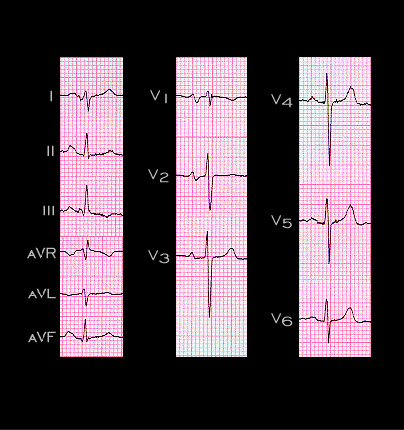
Her tracing is shown again here. The axis of the P wave is +60 degrees, Note that it is notched and prolonged with a duration of 0.12 seconds. These features are best appreciated in leads I and II. Note also its broad negative component in lead V1. These changes are referred to as “P mitrale” and indicate a left atrial abnormality, consistent with left atrial hypertrophy and/or an intra-atrial conduction abnormality. The main QRS axis is +120 degrees (right axis deviation)and the T wave axis is +20 degrees.
